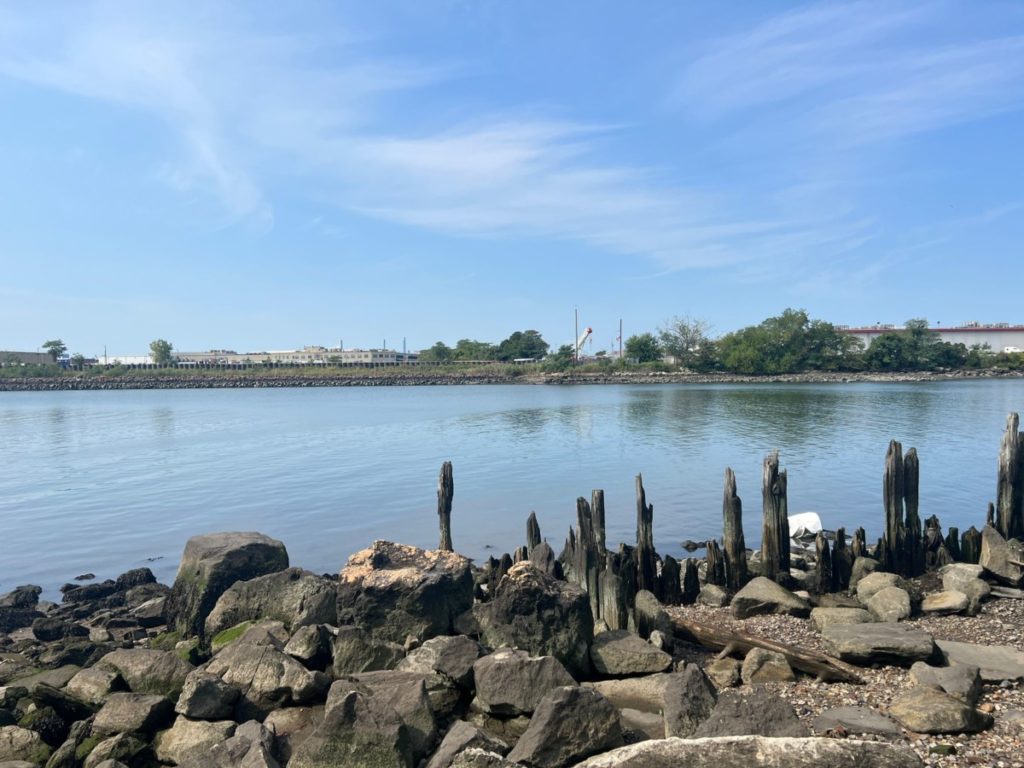
The Bronx River is home to dozens of species of fish and crustaceans, including sunfish with golden bellies, blue crabs with lapis claws and oval-mouthed suckers. On a sunny day in September, the water is a blueish brown, with occasional strokes of green that come from the reflection of trees that sometimes border the 23-mile-long waterway.
Depending on where you are, the trickle of the running water can be a soothing respite from the borough’s honking traffic.
But that’s not how arborists from the New York Botanical Garden found the river on August 31st. While walking through the garden’s native forest, they spotted several floating dead fish. A thick, musty smell was coming from the water and a bubble bath-like foam had formed on its surface.
Hundreds of dead fish, including catfish, dace, darters, and carp, among other species, were piled up along the river’s banks for several miles. The cause of this incident remains unclear.
“We just lost so many of them and it just hurt because it really undid so much of that work that it took to bring the river back from this sewer that it had been turned into,” said Christian Murphy, an ecology coordinator for The Bronx River Alliance.
The sudden death of a large number of fish or other aquatic animals is known as a fish kill or fish die-off.
“Massive fish kills are not normal events,” said George Jackman, Riverkeep, Inc.’s Senior Habitat Restoration Manager. “It is mostly caused by some form of environmental stressor or a pathogen.”
Jackman has been investigating the source of the die-off. He has ruled out the possibility of a pathogen, because multiple fish species were affected. He believes that this incident was triggered by a human-caused event.
“I find it extremely upsetting, because there’s been a lot of sweat equity put into The Bronx River to help restore it,” said Jackman.
After spotting the fish, New York Botanical Garden representatives contacted the Fire Department of New York and the Bronx River Alliance, which called off its scheduled events. They also reported the incident to the New York State Department of Environmental Conservation, which sent Environmental Conservation Police Officers to investigate.
DEC representatives could not analyze the water and fish samples given to the ECOs because they weren’t taken in a timely enough manner or stored properly, according to DEC spokesperson Adanna Roberts. A sample can degrade or not be representative of the cause of death if it’s not taken as soon as possible. Additionally, proper storage prevents outside contamination and preserves tissue. The samples have since been discarded.
“Unfortunately, they could not identify any source that would have accounted for the mortality,” said Roberts. “We are actively working with partners to help ensure that appropriate investigation protocols are in place when die-offs occur in the future.”
It’s not the first time an incident like this has occurred in the area. In 1988, the New York Times reported that thousands of dead herring had caused a foul odor and jammed waterways. The Bronx River Alliance received reports of dead fish in the river in October 2016. And as recently as October 2020, schools of fish were being found dead in the borough.
“We’re really looking for help to try to figure out what happened and trying to make sure this never happens again,” said Murphy.
